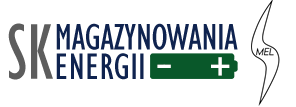The Japanese investment fund SoftBank VisionFund, which in the past has already invested in start-ups such as Uber, Slack and WeWork, has recently invested USD 110 million in the Swiss Energy Vault start-up from the field of energy storage. The idea of the Swiss is based on the use of composite blocks and their potential energy connected with gravity.
The energy storage project involves the use of a robotic and automated crane to raise and drop 35-ton composite blocks stacked on top of each other. The idea is basically simple – with excess energy, the crane is to use it to lift blocks, while when energy is needed again, the blocks are to be dropped, thus returning the accumulated potential energy. According to Energy Vault CEO Roberto Piconi, it is possible to build a tower storage with a capacity of 80 000 MWh, but first the company plans to build a prototype with a capacity of 35 MWh near Milan. Unfortunately, the capacity of a larger storage was not given. The CEO also announces that the energy supplied will cost 6 cents/kWh, and that the efficiency of the entire charge-discharge cycle will be within 80-90 percent.
Currently, the most popular large-scale energy storage method is pumped-storage power plants, used since the 19th century. They are not free of defects. In order for them to be built, a huge space and place with appropriate geological, topographic and hydrological conditions are needed. The tower storage concept uses the same principles as the pump storage, but only a piece of flat surface is needed to build it. The solution is also fully scalable.
Funds obtained from the Japanese bank will certainly accelerate the development of a concept focused on long-term storage from non-controllable, renewable energy sources. According to the creators of the idea, problems related to block placement changeable wind, weather, the level of demand in the network and control of cranes to ensure their optimal operation are solved by using appropriate automation algorithms. The coming years will show whether the concept will prove effective and whether it will withstand the competition of other technologies, such as electrochemical and flow batteries, hydrogen or LAES.
Marcin Rowicki

 PL
PL EN
EN





